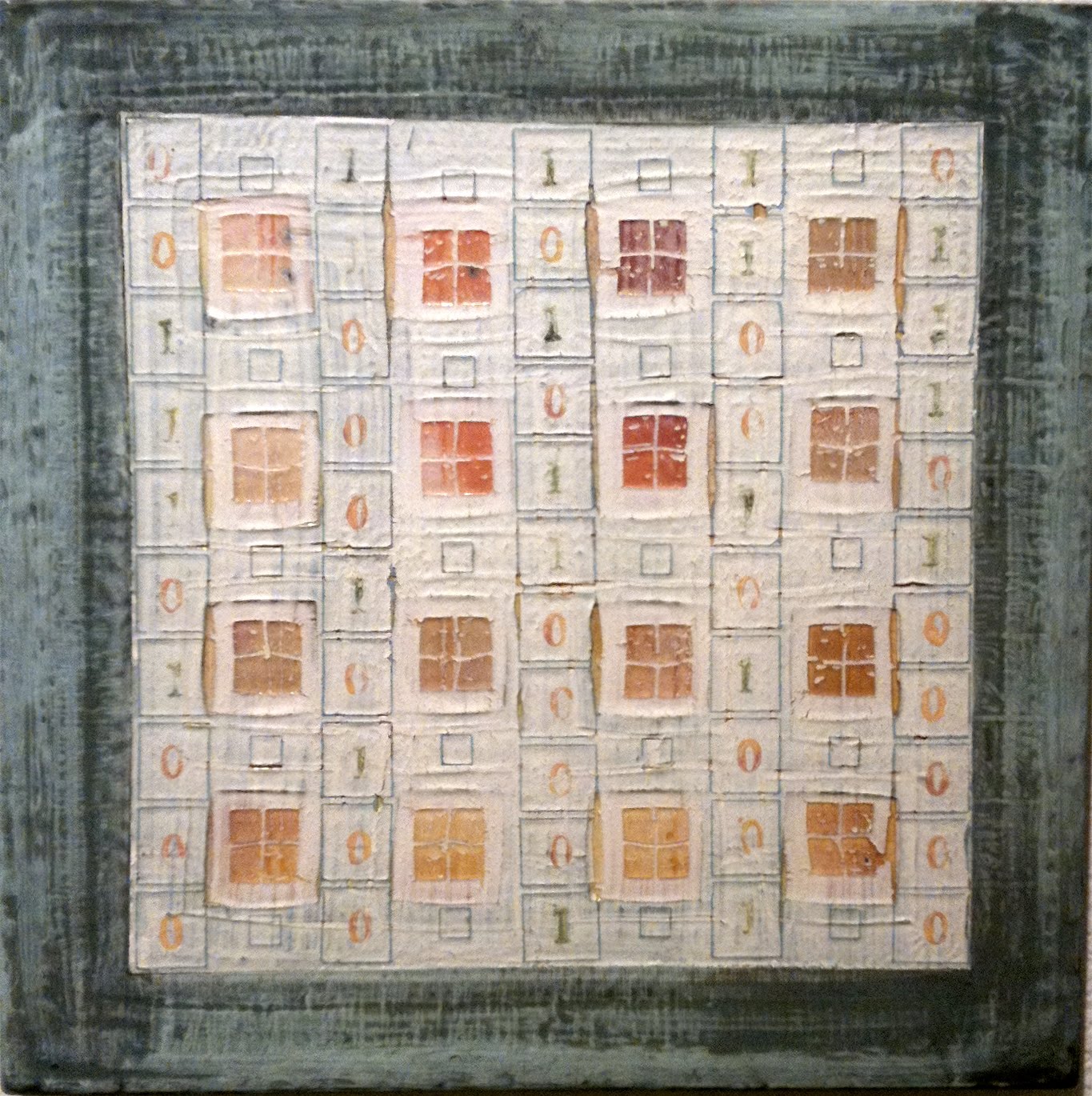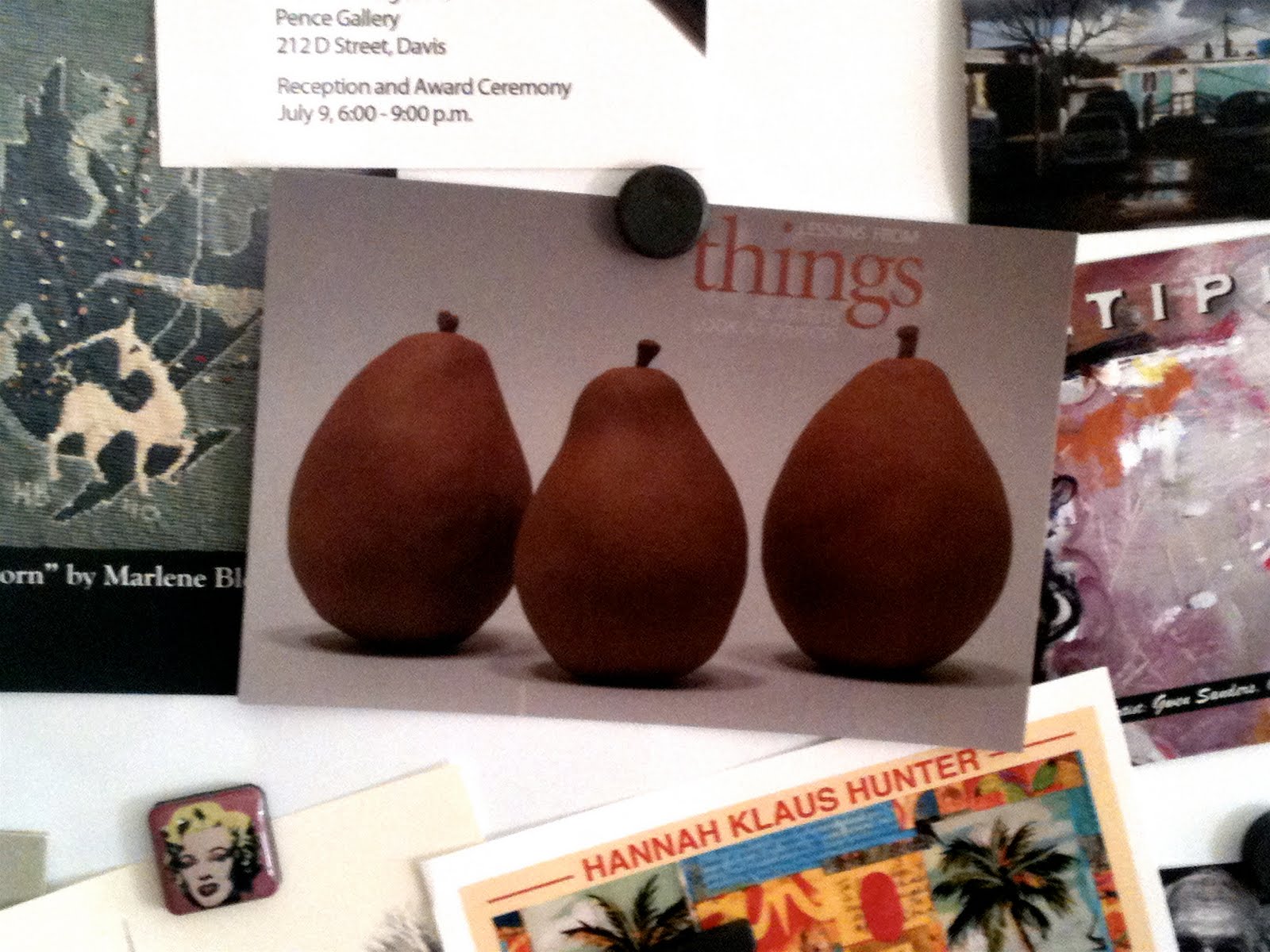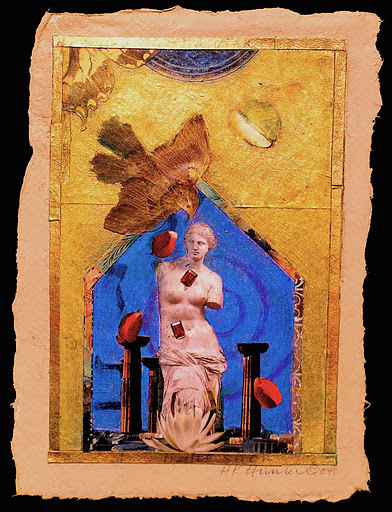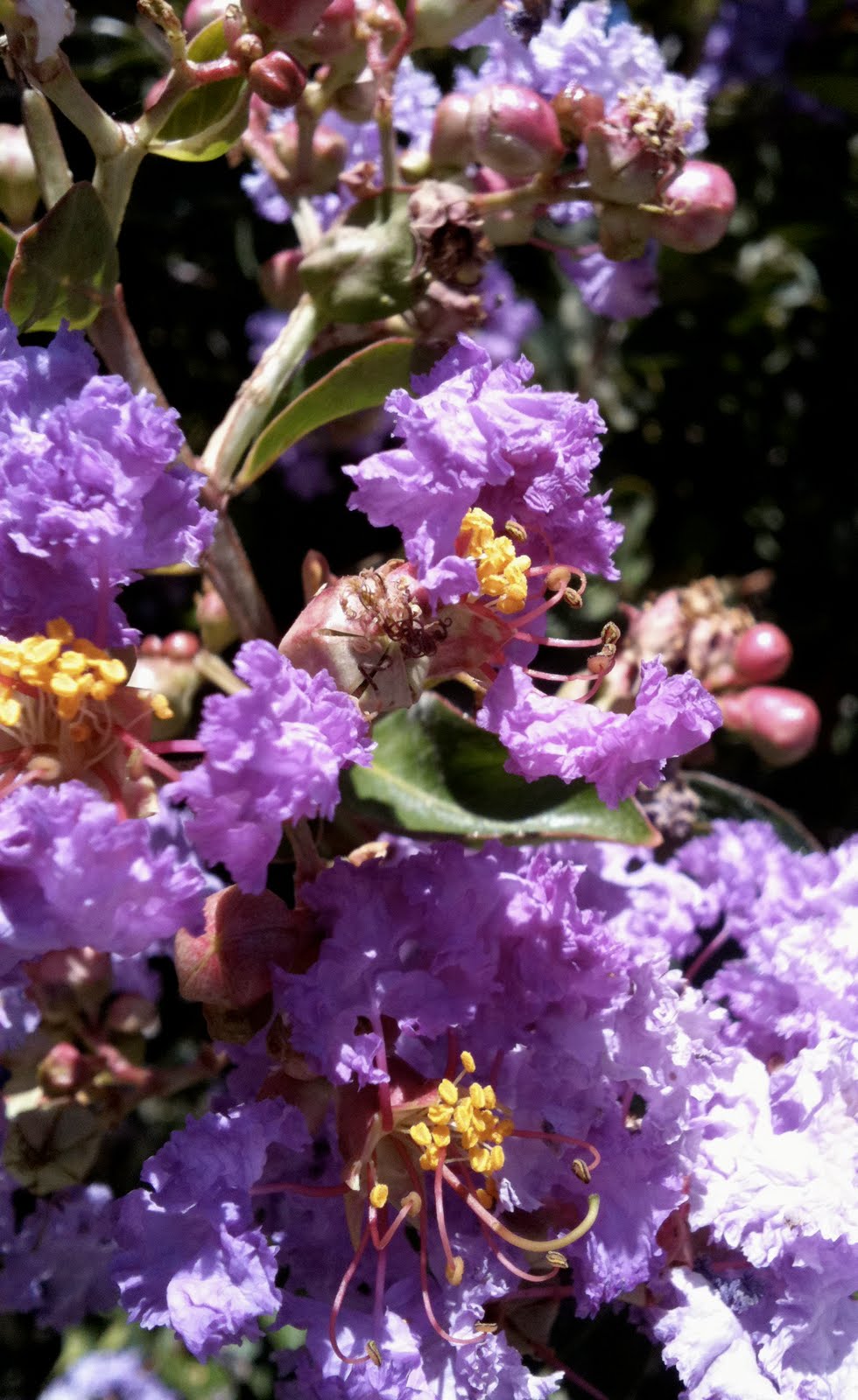 |
| Dialogue with Red, ©2011, H. Hunter, 29" x 29" |
As the Jewish New Year passed last week with all the speed of a French TGV train, I spent ellipses of that time "wondering" my way back over the year. And I do mean wondering.
This past year, my goal was to create work for an art quilt show I'd been invited to participate in. Never mind the fact that prior to this, I had done very little quilting, when I dive into something, I'm passionate about it. I try to inhale as much knowledge as I can, trusting that if I do, it will carry me to a place that I can equally trust.
In the spirit of that quest, I gave myself the challenge of creating six 36" quilts in the space of six months. I liked the multiple of six and I thought that the time I'd allotted would be more than adequate. For traditional quilt patterns, this would be ample time, but because I was approaching quilting like collage, the time passed in the blink of an eye.
 |
| Junebug, detail, ©2011, H. Hunter, 27" x 27" |
That's how the other week I came to find myself with six quilts, all needing to be bound and sleeves for hanging added as well. In some ways this might seem like the easy part of the process: choose a binding and off you go. But instead, using the collage process (cut out that piece, put it in, see if it fits, take it out, try another place, moving it until it fits and so on), it turns out that the binding is an integral part of the piece, and is much more than a quick intuitive decision.
After cutting the first round of bindings, I began to attach them and found myself making faces. "Yuck! What's going on here?" I asked myself. As I unstitched bindings and studied the quilts, I discovered that actually, the binding seemed to serve the same function as the final strokes of a drawing.
I also understood that I was facing my one of my own oft repeated laws of art: whenever I begin a painting, a drawing, or a collage, the choices are limitless, or, limited only by my own personality and imagination. With each step, the choices narrow because of the actions already chosen. When I get down to these last strokes--the challenge is to be concise, to choose the exact combination of colors that will allow my format to sing like Isaac Stern playing a Bach partita.
 |
| Quintessence, detail, ©2011 H. Hunter, 30" x 30" |
At the same time, it's the place of greatest risk. If I make the wrong decision, I stand to lose everything.
Early the next morning I grabbed my dilemma by its horns and headed up to the studio in my nightgown (that way, the quilt is taken by surprise, it's not sure whether you're serious or not...)
I began to cut and sew. After an hour had past, I'd past the test and made it through the rough spots.
I'd taken a risk and allowed the work, not my head to tell me what kind of fabrics were needed. A revelation indeed because at the eleventh hour, I often want to depend on my head not my eyes or my heart.
A week has passed since I wrote this. The new bindings are now sewn on, the show is up and I'm just about ready to head out the door to the opening. And like the bindings, I've learned that even though I may want to shortcut the evening (the biggest challenge of the whole process is showing up for the event) I'm thinking that by completing the circle and taking a risk, I just might learn something that will help the evening to sing.

















